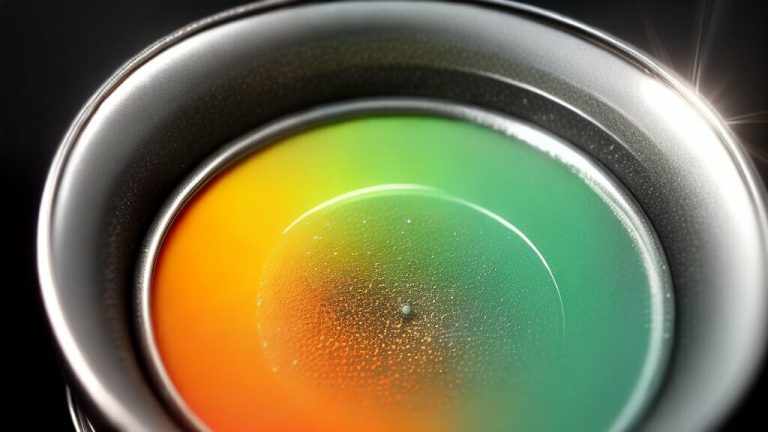Silver is a versatile and valuable metal that has been prized for centuries. However, with the hitch-up of counterfeit products, it can be challenging to distinguish real silver from fake. Luckily, there is an easy and effective method to test the authenticity of silver using a lighter.
In this guide, we’ll take you through the steps to tell if silver is lighter, including understanding the properties of silver, gathering the necessary tools, inspecting the silver item, performing the more lightweight test, analyzing the results, and considering additional testing methods and know to refill a lighter. We’ll also provide tips for spotting fake silver, caring for and maintaining your silver, and selling or valuing your silver items.
Key Takeaways:
- The lighter test is an easy and efficient way to determine the authenticity of silver.
- Real silver conducts heat quickly and should withstand the flame without any damage.
- Pay attention to the item’s weight, sound, and craftsmanship to spot fake silver.
- Proper care and maintenance of silver are crucial to preserve its beauty and value.
- Consider seeking professional guidance when selling or valuing your silver items.
Understanding the Properties of Silver
Before we dive into the lighter test, it’s essential to understand the properties of silver. Real silver has specific characteristics that set it apart from other metals. This knowledge will help you accurately gather the authenticity of your silver items.
Silver is a soft, malleable metal used for centuries in jewelry, coins, and household items. Real silver, also known as sterling silver, contains 92.5% pure silver and 7.5% other metals, usually copper. The presence of these other metals enhances the durability and strength of the silver.
One key characteristic of silver is its luster, a natural shine that gives it a distinct appearance. Real silver should have a bright and reflective surface without any signs of dullness or tarnish. Another defining feature of silver is its weight. Silver is relatively heavy and more dense than other metals, so it should feel substantial in your hand.
Real silver also has a specific sound when struck. Known as its “ring,” it produces a high-pitched tone that lingers for a few seconds. This sound indicates the purity of the silver, as lower-quality imitations may make a flat or dull sound.
In addition to these properties, real silver is highly conductive to heat and electricity. This means that it quickly absorbs and disperses heat, which can be helpful when testing its authenticity with a lighter, as discussed in the next section.
Gather the Necessary Tools
Before you begin the lighter test, ensure you have readily available tools. The following items are required for conducting the test:
| Tools | Description |
|---|---|
| Silver item | The item you want to test for authenticity. This can be a piece of jewelry, a coin, or any other silver object. |
| Lighter or match | You will need a flame to heat the silver item. |
| Clean, heat-resistant surface | Ensure you have a safe surface to work on to avoid accidents or damages. |
| Heat-resistant tongs or tweezers | Use these tools to hold the silver item while heating it up. This will prevent any burns to your fingers or damage to the article. |
Having all these tools ready beforehand will make the testing process go smoothly, ensuring you can accurately determine whether your silver is real or fake.
Inspect the Silver Item
Examining the silver item closely before proceeding with the lighter test is essential. Look for any markings, stamps, or hallmarks that indicate its authenticity. Silver items typically have markings to identify the maker, such as “925” for sterling silver or “999” for pure silver. If your silver item has no markings or stamps, it may be more challenging to authenticate.
Take note of the silver item’s color, shine, and overall appearance. Real silver has a distinct shine that doesn’t fade quickly, whereas fake silver may appear dull or discolored. If the silver item has any signs of wear and tear, it may be more difficult to authenticate using the lighter test method.
Perform the Lighter Test
Now, it’s time to conduct the lighter test. Hold the silver item with a pair of heat-resistant tongs or tweezers. Gently apply the lighter’s flame to a discreet area of the article, away from any delicate or valuable parts. Observe the reaction of the silver to the heat.
A genuine silver item will conduct heat quickly and withstand the flame without damage. If the silver thing melts, warps, or shows signs of discoloration, it may indicate that it is not real silver. Be sure to let the thing cool down before handling it after the test.
Analyze the Results
After performing the lighter test, carefully analyze the results. Real silver conducts heat quickly, so it should withstand the flame without any damage. If the silver item melts or shows signs of discoloration, it may indicate it is not real silver.
Another possible outcome is the presence of a black sooty residue on the item. This is a result of the sulfur in the lighter fluid reacting with the silver, and it does not necessarily indicate that the silver is fake. However, it could also mean the item is silver-plated rather than solid silver.
If you are still unsure about the authenticity of your silver item after performing the lighter test, you may want to consider using additional testing methods or seeking professional assistance. Remember that the lighter test is not foolproof, and taking extra precautions regarding valuable items is always better.
Consider Additional Testing Methods
The lighter test is a quick and easy way to identify real silver, but it may not always provide definitive results. If you’re still unsure about the authenticity of your silver item, you can use several additional testing methods.
One popular method is the magnet test. Real silver is not magnetic, so if your silver item is drawn to a magnet, it is likely not authentic.
The ice test is another option. Simply place a few ice cubes on the silver item and observe how quickly they melt. Real silver conducts heat quickly, so it should cause the ice cubes to melt rapidly.
If you’re still uncertain about your silver item, it’s best to seek professional assistance. A reputable jeweler or silver expert can thoroughly examine and accurately assess your item’s authenticity.
Tips for Spotting Fake Silver
Aside from the lighter test, several other signs can help spot fake silver. Pay attention to the weight of the item. Real silver is denser than most other metals and should feel heavier than its size suggests.
Another clue is the sound of the item when struck. Genuine silver will produce a clear, high-pitched ring, while fake silver will make a dull thud.
Additionally, examine the overall craftsmanship of the item. Authentic silver items are often handmade or intricately detailed, while fake silver may have rough edges or look poorly made.
Beware common silver imitations, such as silver-plated or nickel-silver items, which may look similar to real silver but are less valuable. If in doubt, seek the advice of a professional appraiser or authenticate your items through a reputable dealer.
Proper Care and Maintenance of Silver
Once you have confirmed the authenticity of your silver items, you must know how to take care of them properly to prevent damage and tarnishing. Here are some tips for cleaning, storing, and maintaining your silver:
- Clean your silver regularly: Dust and dirt can accumulate on your silver items and cause oxidation, which leads to tarnishing. To prevent this, wash your silver with a soft cloth and store it in a dry, cool place.
- Use a silver cleaning solution: If your silver has become tarnished, use a specialized cleaning solution to restore its shine. Avoid using abrasive cleaners or brushes, which can scratch the surface of your silver.
- Store your silver properly: Store your silver items in a soft cloth or lined case to prevent scratches and damage. Avoid wrapping them in newspaper or plastic, which can cause tarnishing.
- Prevent tarnishing: To prevent tarnishing, avoid exposing your silver items to direct sunlight, humidity, and chemicals such as hairspray and perfume. If possible, store them in an airtight container with anti-tarnish strips.
- Handle your silver carefully: Silver is a soft metal that can be easily scratched or dented. Handle your silver items carefully and avoid dropping them or banging them against hard surfaces.
- Polish your silver: Regularly polish your silver items using a soft or silver polishing cloth to maintain its shine. This will help remove tarnish or fingerprints and keep your silver looking its best.
By following these tips, you can ensure that your silver items remain in good condition and retain their beauty and value for years.
Selling or Valuing Your Silver
Several options are available if you want to sell your silver items. You can sell your silver online through auction websites, marketplaces, or specialized dealers. Alternatively, you can sell your silver in person through pawnshops, antique stores, or precious metal dealers. Researching and comparing different selling options is essential to ensure you get a fair price for your silver.
If you’re unsure about the value of your silver items, you can get them appraised by a professional. Look for reputable appraisers with a good track record specializing in silver. They can provide you with a detailed report on the value and condition of your silver, which can be helpful when selling or insuring your items.
Conclusion
Using a lighter to test the authenticity of silver is a quick and easy method that anyone can do. Following the steps outlined in this guide, you can confidently identify whether your silver item is real or fake.
Before conducting the lighter test, examine the silver item closely and note any markings, stamps, or hallmarks indicating its authenticity. After performing the lighter test, analyze the results carefully and consider using additional testing methods if needed.
It’s also essential to properly care for and maintain your silver items to preserve their beauty and value. Cleaning, storing, and preventing tarnish are vital to keeping your silver in excellent condition.
If you’re looking to sell or determine the value of your silver, always seek professional guidance to ensure you get a fair price. With these tips and knowledge, you can confidently invest in and care for your silver possessions.

I’m Alfred Davis, and I’m all about lighters. Hailing from the great state of Texas, USA, I’ve cultivated a deep passion for these fascinating gadgets. With years of hands-on experience and a burning curiosity (pun intended), I’ve become an expert in all things related to lighters.
My journey with lighters began as a hobby and quickly became a full-blown obsession. I’ve explored the diverse world of lighters inside and out, from classic Zippo designs to modern plasma arc models. I’ve tested, tinkered with, and even collected rare pieces while learning the intricate mechanics and unique histories behind each one.
Through my writing, I aim to share my knowledge, insights, and reviews to help you make informed decisions about choosing the perfect lighter. Whether you’re a seasoned collector or just looking for a reliable fire source, I’ve got you covered. Join me in unraveling the fascinating realm of lighters right here at LightersInfo, where ignition meets expertise.
Alfred Davis

